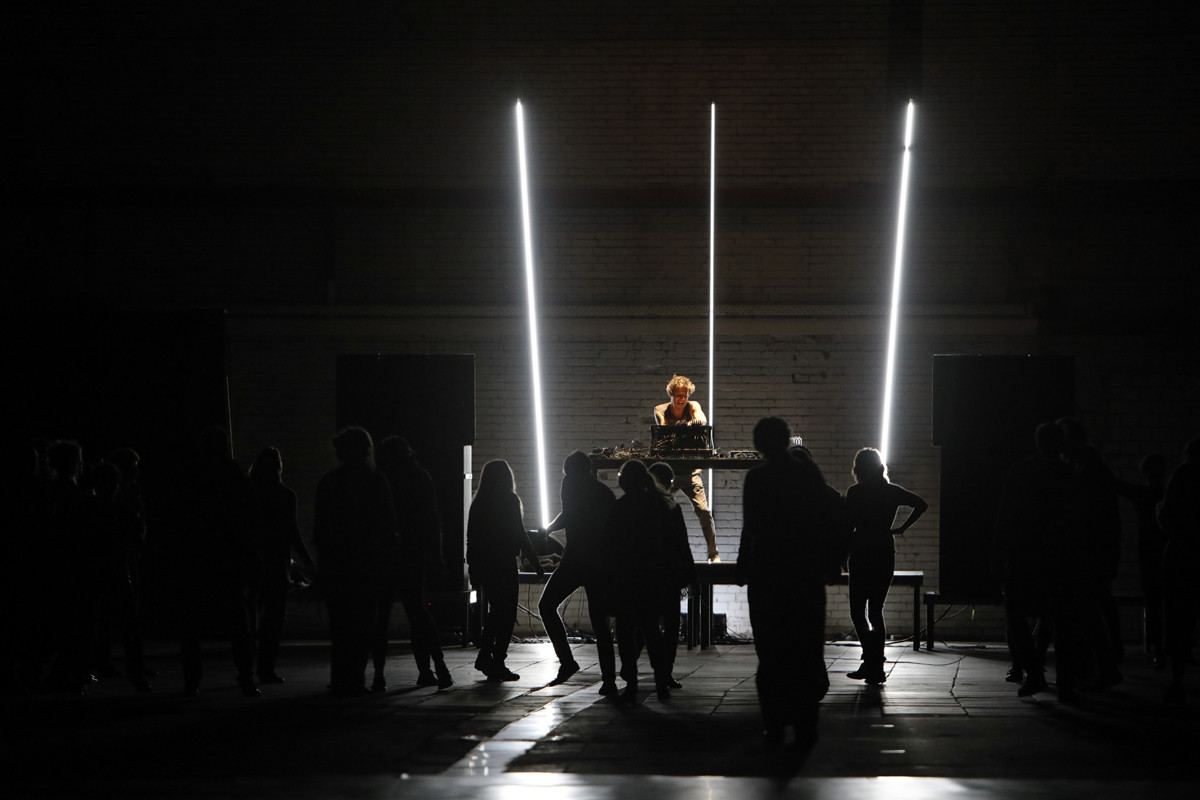Conception: Boris
Charmatz
A Dancer’s Day
Located at the intersection of issues explored by the Musée de la danse and the choreographic work of Boris Charmatz, A Dancer’s Day raises two questions: what does a dancer do with his day outside the time of performance? What structures the dancer’s relationship to time, expenditure of energy and recuperation, creation and rehearsal? And, further, how does one unfold and expand the perception of a choreographic work—how to show it, how to experience it other than on the stage of a theater? Through warm-ups, teaching, and workshops, the choreographic work comes to reside in bodies and becomes accessible to everyone, big and small.
By following the rhythm of a single day, A Dancer’s Day allows us to approach the activity of the dancer in its creative dimension, both in terms of concrete work and the most ordinary aspects of daily life. Moving. Learning. Eating. Resting. Looking. Redoing. Understanding. Moving again. In the course of each of these actions punctuated by a warm-up, a picnic, a siesta, a performance, or a dance-floor, everyone is invited to experience the relationship to expenditure of energy, fatigue, the pleasure of rehearsal and the production of gestures. In the back-and-forth interplay between the inside and the outside, between seeing and doing, the gaze and practice, A Dancer’s Day expands upon the questions raised by Fous de danse and 10000 gestes in 20,000, in 50,000 … in 100,000 gestures!
Gilles Amalvi
A Dancer’s Day premiered in the former airport Tempelhof Hangar 5 in Berlin on September 14, 15, 16 and 17, 2017 with a program about Boris Charmatz’s last creation 10000 gestures:
16:00 warm-up with the 24 dancers of 10000 gestures
17:00 workshop with Boris Charmatz
18:00 picnic with (untitled) (2000) by Tino Sehgal with Frank Willens
18:50 Common Sleep
19:30 performance 10000 Gestures
20:40 dancefloor with T. Raumschmiere
21:40 étrangler le temps with Boris Charmatz & Emmanuelle Huynh
“Hangar 5 at Tempelhof, the former airport in Berlin, is equipped simply with a dance floor and bleachers designed by Francis Kéré. Undeterred by glacial winds, some hundred spectators flocked to the venue. A Dancer’s Day is a daylong event focused on performers brought together by Boris Charmatz especially for this project. Over the course of one afternoon, everyone can be a participant or an observer. Caught up in the excitement, we will follow on the heels of Régis Badel, the leaping dancer. After a forty-five minute warm-up, your body, dripping with sweat, will prove to be wonderfully receptive to sensations and you will soon forget your growing fatigue. This improvised group — that is, our group — will explore quite closely the relationship to the other. A Berlin utopia? Perhaps. A Dancer’s Day will thus launch its program, kicking off with a workshop, with Charmatz on the microphone and The Streets providing the soundtrack, and ending with a siesta. Except that you will be rocked to sleep by the voices of the dancers. As for the picnic, it will take the form of a performance. The nudist and dancer Frank Willens, who was the performer of Tino Sehgal’s thesis piece (untitled) (2000), will fill the hangar with his radiant presence. …”
Philippe Noisette - Extract from Les Inrockuptibles 18-24 Oct 2017
“It must be said that upon entering the gigantic Hangar no. 5 of the abandoned Tempelhof airport, now a new annex of the Volksbühne, one may be apprehensive about possible caricature at the sight of this assembly of bodies, so obviously unlike one another, these strangers dancing together, Berliners, families in tow, a mother and her daughter with Down’s syndrome, a university professor with his wife, all trying out the steps gently guided by Charmatz. And yet, the ways bodies have of coming to grips with one another and organizing themselves, of touching and protecting each other, and the collective effort of amateurs which so quickly looks a lot like choreography, unwittingly create the impression that something important is happening here. While this labor may be far from Castorf’s masterful spoken theater, it is likely to profoundly modify one’s relationship to the other as well as give expression to the political, that is, to the tension between the individual and the collective.”
Élisabeth Franck-Dumas - Extract from Libération 22 sept 2017
